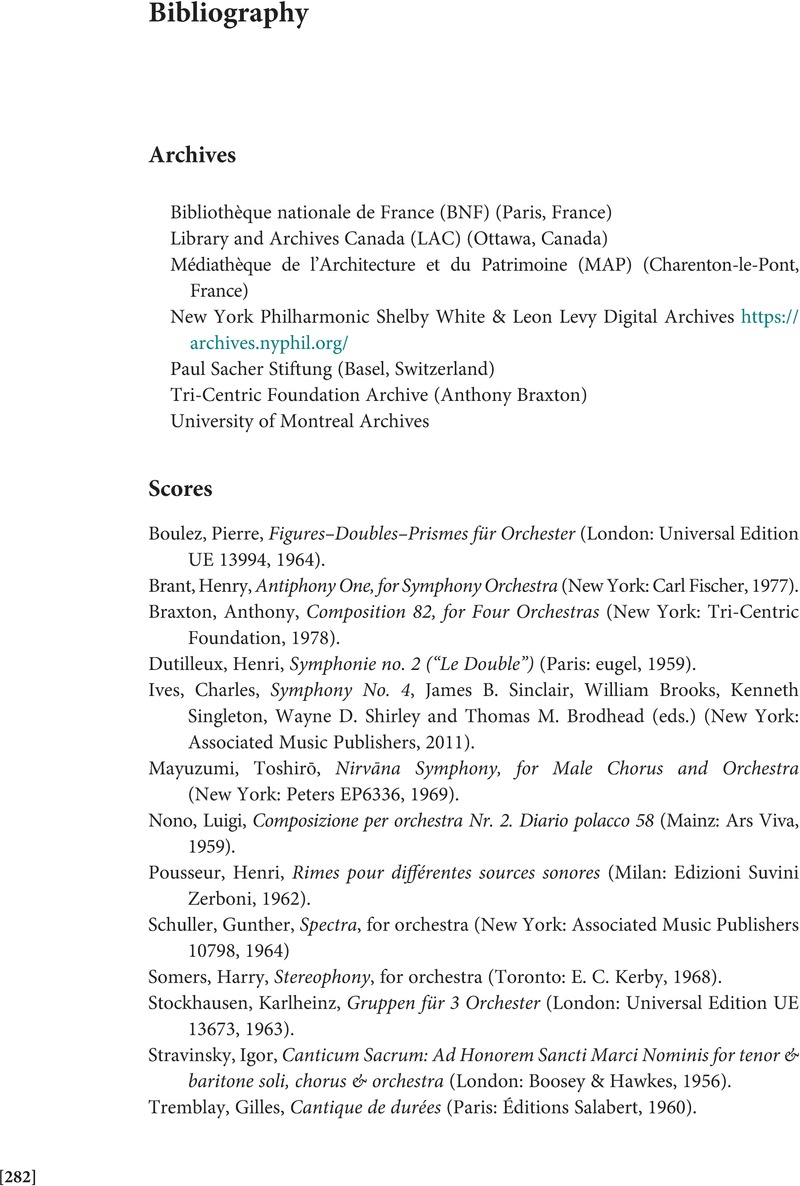Book contents
- Avant-Garde on Record
- Avant-Garde on Record
- Copyright page
- Dedication
- Contents
- Figures
- Acknowledgements
- 1 Introduction
- 2 Ping-Pong and Its Discontents
- 3 Doubles, Rhymes and Groups in Stereo
- 4 Transnational Multiorchestralism
- 5 The Monumental Stereo of Son et Lumière
- 6 Phonographic Spaces: Circling San Marco, Navigating Niagara
- 7 Open Works Locked into Grooves
- Epilogue
- Bibliography
- Index
- Music Since 1900
- References
Bibliography
Published online by Cambridge University Press: 05 January 2024
- Avant-Garde on Record
- Avant-Garde on Record
- Copyright page
- Dedication
- Contents
- Figures
- Acknowledgements
- 1 Introduction
- 2 Ping-Pong and Its Discontents
- 3 Doubles, Rhymes and Groups in Stereo
- 4 Transnational Multiorchestralism
- 5 The Monumental Stereo of Son et Lumière
- 6 Phonographic Spaces: Circling San Marco, Navigating Niagara
- 7 Open Works Locked into Grooves
- Epilogue
- Bibliography
- Index
- Music Since 1900
- References
Summary

- Type
- Chapter
- Information
- Avant-Garde on RecordMusical Responses to Stereos, pp. 282 - 310Publisher: Cambridge University PressPrint publication year: 2023



